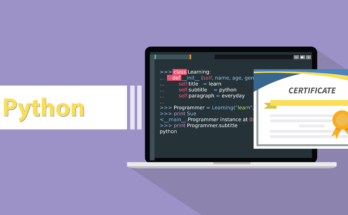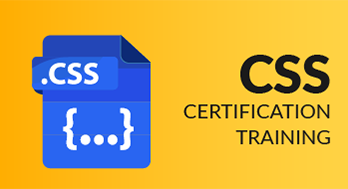“Blended professional certificate, a unique combination of online and in-person learning, have gained prominence due to their flexibility, accessibility, and effectiveness in equipping individuals with the skills needed to excel in their chosen fields”. In today’s rapidly evolving job market, staying competitive and advancing one’s career has become increasingly challenging.
The traditional career trajectory of obtaining a college degree and working for a single employer for decades is no longer the norm. As technology and industries evolve, professionals are expected to adapt, upskill, and diversify their knowledge. In response to this demand, professional certificates have emerged as valuable credentials that can enhance career prospects.
This article explores the concept of blended professional certificates, delving into their definition, advantages, and practical applications, while also addressing the challenges and the future of this mode of learning.
What is Blended Professional Certificate?
Blended professional certificates are a modern approach to learning, bridging the gap between traditional classroom education and online learning. These certificates combine the strengths of both in-person and online instruction, offering a more holistic and flexible educational experience.
Blended learning has gained popularity across various educational settings, including K-12, higher education, and professional development. It leverages digital technology to create a balanced blend of face-to-face interaction and online resources. In the context of professional certificates, this means that learners can access courses, materials, and interactive components online while also participating in hands-on, in-person experiences when necessary.
The Advantages of Blended Professional Certificates
- Flexibility and Accessibility: One of the most significant advantages of blended professional certificates is their flexibility. Learners can access content and complete assignments at their own pace, making it easier to balance education with other commitments such as work and family. Moreover, online components are accessible from anywhere with an internet connection, eliminating geographical constraints.
- Engaging Learning Experience: Blended learning combines the interactive and social aspects of in-person learning with the self-paced and customizable nature of online education. This variety keeps learners engaged and motivated throughout the program, as they can interact with instructors and peers in person and engage with multimedia and discussion boards online.
- Real-World Application: Blended professional certificates often incorporate hands-on experiences or practicums, ensuring that learners can apply the knowledge and skills they acquire in real-world situations. This practical component is crucial for preparing individuals for the demands of their chosen field.
- Cost-Efficiency: Blended programs often cost less than traditional degree programs, as they eliminate some of the overhead associated with on-campus facilities. Learners can also save on commuting expenses and other related costs, making professional development more affordable.
- Increased Retention and Understanding: Studies have shown that blending in-person and online learning can lead to better comprehension and retention of information. This is because learners benefit from both the personalized, self-paced aspect of online learning and the guidance and immediate feedback provided in face-to-face interactions.
- Customized Learning Paths: Blended professional certificates allow individuals to tailor their learning experience to their specific needs and preferences. They can choose when and how to engage with online content, and the in-person component can be designed to cater to various learning styles.
Practical Applications of Blended Professional Certificates
Blended professional certificate is not limited to any specific industry or field. They can be customized to meet the needs of diverse professions, providing valuable skills and knowledge for individuals looking to excel in their careers.
Here are some practical applications of blended professional certificates in various sectors:
- Information Technology (IT):
- Cybersecurity: Blended certificates in cybersecurity provide a mix of online courses covering theory and in-person workshops for hands-on experience in securing computer systems and networks.
- Data Science: Learners can access data science courses online and attend in-person labs to practice data analysis and machine learning techniques.
- Healthcare:
- Nursing: Blended nursing certificates combine online coursework with clinical rotations in hospitals or healthcare facilities.
- Medical Coding: Courses on medical coding can be delivered online, with practical assessments conducted in person for accuracy and proficiency.
- Business and Management:
- Project Management: Blended project management certificates offer online modules on theory and in-person workshops for project planning and execution.
- Leadership Development: Professionals can enhance their leadership skills through online leadership courses and in-person team-building exercises and workshops.
- Education:
- Teaching and Learning: Blended certificates for educators include online modules on pedagogy and classroom management, along with in-person observations and teaching practice.
- Design and Creative Arts:
- Graphic Design: Online graphic design courses teach design principles, while in-person sessions allow learners to apply their knowledge using industry-standard software.
- Interior Design: Blended interior design certificates offer online lessons on design theory and in-person studio work for practical experience.
Challenges of Blended Professional Certificates
While blended professional certificate offers numerous advantages, they also come with their fair share of challenges. It is essential to address these issues to ensure the success and effectiveness of such programs:
- Technology and Infrastructure: Access to reliable internet and digital devices is a prerequisite for online learning. Not all learners may have access to the necessary technology, potentially creating inequalities in education.
- Effective Instruction and Assessment: Instructors need to adapt their teaching methods for both online and in-person components. Additionally, ensuring fair and consistent assessment can be more complex in blended settings.
- Time Management: Balancing work, family, and education can be challenging for many learners. Some may struggle with time management and motivation in self-paced online modules.
- Communication and Collaboration: Effective communication and collaboration are essential in blended learning, but some learners may struggle with online interaction, potentially leading to isolation or misunderstanding.
- Integration of Online and In-Person Components: Coordinating the online and in-person parts of a blended program can be a logistical challenge. Ensuring that both components align and complement each other is crucial.
Also Read: Certified Authorization Professional CAP Certification
The Future of Blended Professional Certificates
Blended learning, including professional certificates, is expected to play a more prominent role in the future of education and workforce development. Several trends and developments indicate a growing demand for and evolution of these programs:
- Digital Transformation: As technology continues to advance, online education platforms are becoming more user-friendly and accessible. This will likely lead to more institutions offering blended professional certificates to cater to a broader audience.
- Increased Personalization: Future programs may become even more personalized, allowing learners to choose from a variety of online and in-person components that best fit their needs and preferences.
- Hybrid Work Environments: The rise of remote work and hybrid work models has demonstrated the importance of digital skills. Blended professional certificates that focus on digital literacy and remote work skills are likely to become more popular.
- Stackable Credentials: Learners may pursue multiple certificates in a stackable fashion to build a diverse skill set over time, helping them adapt to evolving job market demands.
- Recognition and Accreditation: The recognition of professional certificates by employers and accrediting bodies is expected to increase, making them a valuable and recognized alternative to traditional degrees.
Blended Professional Certificate – FAQ – Frequently Asked Questions
Q1: What is a Blended Professional Certificate?
A Blended Professional Certificate is a combination of in-person and online learning that provides a flexible and interactive educational experience. It typically involves a mix of traditional classroom instruction and web-based coursework.
Q2: How does a Blended Professional Certificate differ from a traditional certificate program?
A Blended Professional Certificate combines the benefits of in-person learning with the convenience of online courses. It offers more flexibility, allowing learners to access resources and lectures from anywhere, while still providing face-to-face interaction in some cases.
Q3: What are the advantages of pursuing a Blended Professional Certificate?
- Flexibility: Blended certificates offer a flexible learning schedule.
- In-Person Interaction: They provide valuable in-person networking opportunities.
- Accessible Resources: Online materials can be accessed at any time, enhancing learning opportunities.
- Personalized Learning: Learners can choose the learning format that suits them best.
Q4: What subjects or fields offer Blended Professional Certificates?
Blended certificates are available in a wide range of fields, including business, technology, healthcare, education, and more. They are often designed to meet the specific needs of professionals in those fields.
Q5: Can I earn college credit with a Blended Professional Certificate?
Some institutions offer Blended Professional Certificates that can count as college credit, while others are non-credit programs. It’s essential to check with the program provider to understand their credit policies.
Q6: How long does it take to complete a Blended Professional Certificate?
The duration can vary based on the program and the number of courses involved. Typically, they can be completed in a few months to a year, depending on the pace at which you choose to study.
Q7: Are Blended Professional Certificates recognized by employers?
Employer recognition can vary, but many employers value these certificates because they combine practical skills with online learning, demonstrating adaptability and competence.
Q8: Can I access Blended Professional Certificate programs from anywhere in the world?
Yes, many Blended Professional Certificate programs offer online components that can be accessed globally, making them accessible to learners around the world.
Q9: How do I apply for a Blended Professional Certificate program?
To apply for a Blended Professional Certificate, you typically need to visit the program provider’s website, complete the application process, and pay any associated fees. Requirements may vary by program.
Q10: Are there financial aid options available for Blended Professional Certificate programs?
Some institutions and programs offer financial aid or scholarships. It’s advisable to check with the program provider and explore available options.
Remember that the specific details of Blended Professional Certificates can vary by institution and program, so it’s essential to research and contact the programs you’re interested in for precise information.
Conclusion
Blended professional certificates are a powerful educational tool that bridges the gap between traditional classroom learning and online education. These programs offer learners flexibility, accessibility, and real-world application, making them an attractive option for individuals looking to enhance their careers. As technology continues to evolve and industries adapt, blended certificates are expected to play a pivotal role in workforce development, providing individuals with the skills and knowledge they need to succeed in the ever-changing job market.
While challenges exist, addressing them through effective design and support will be essential in unlocking the full potential of blended professional certificates. As a flexible and dynamic mode of education, blended learning holds the promise of a brighter, more adaptable future for learners and professionals alike.




